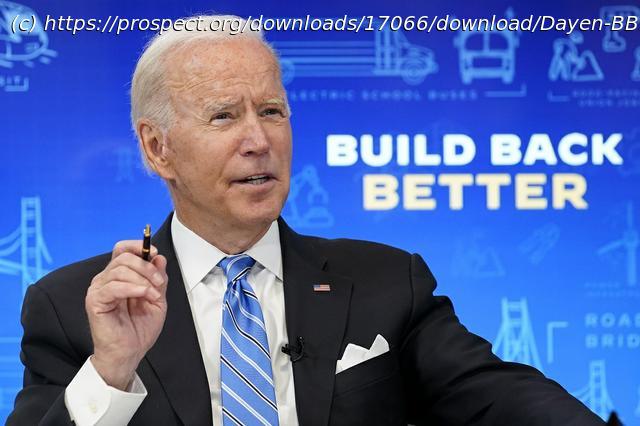It has its selling points. But it doesn’t appear to meet the test of permanent, hassle-free, and meaningful.
A couple of days ago, I took to The New York Times to lay out a concept for thinking about the Build Back Better Act. We had a pandemic that exposed real cracks in our social policy, in areas like health care, family care, housing, and cash assistance in an emergency. We showed ourselves unprepared for a crisis, with another slow-motion crisis—our warming planet—looming on the horizon. So the imperative was to reduce these vulnerabilities for Americans with simple, meaningful, permanent programs, in ways that could earn back the trust of the nation. After six months of wrangling, we have a framework from the White House on the Build Back Better Act. It’s unclear whether this includes everything that will be in the final bill (in particular, drug prices and the state and local tax deduction are big wild cards), when the final bill text will be produced, and whether all 50 Democratic senators are on board (neither Joe Manchin nor Kyrsten Sinema has actually said that they would vote for this). It seems pretty clear that a framework, by itself, won’t be enough to get the House to pass the bipartisan infrastructure bill, although that’s what will be asked of progressives today; in fact, that appears to be the purpose of this announcement. But this is close enough to the final tally for the Biden agenda that we can assess it. There will be a lot of focus on what didn’t make the cut; paid family and medical leave and Medicare negotiation of prescription drug prices are the biggest omissions. But what about what’s in here? Does it cohere to this standard of building back better? More from David Dayen You cannot improve conditions for Americans if they don’t have a sustainable planet to live on. There is $555 billion, around 30 percent of this bill, earmarked for climate investments, though that stretches the definition. The clean-energy tax credits, which last throughout the ten-year budget window, will stand alongside still-extant tax credits for fossil fuels, which Manchin demanded stay in place. The $320 billion tax credit framework is modeled on the Clean Energy for America Act, which includes production tax credits for anything carbon-neutral. That can include nuclear and carbon capture facilities, which have either been too cost-prohibitive to build or exist only on paper. Other credits are for home energy, energy efficiency, and electric vehicles. We’re going to hope Americans take up the opportunity to green their lives at a somewhat cheaper cost. There’s $105 billion for resilience projects, which fight the effects of climate change rather than mitigate its presence. Sadly, that’s probably where we are as a species. The Civilian Climate Corps slots in here, with the investment folding into AmeriCorps, a not-very-well-run program. There’s a $110 billion industrial policy piece here, emphasizing the jobs component of the climate crisis by investing in domestic supply chains for wind turbines, solar panels, steel, cement, and aluminum. (Supply chain bottlenecks are raising costs for clean energy as we speak.) The Clean Energy and Sustainability Accelerator, sometimes called a climate bank, is designed to invest in green projects while leveraging private capital, an inroad for the financial sector to involve itself in the transition.






